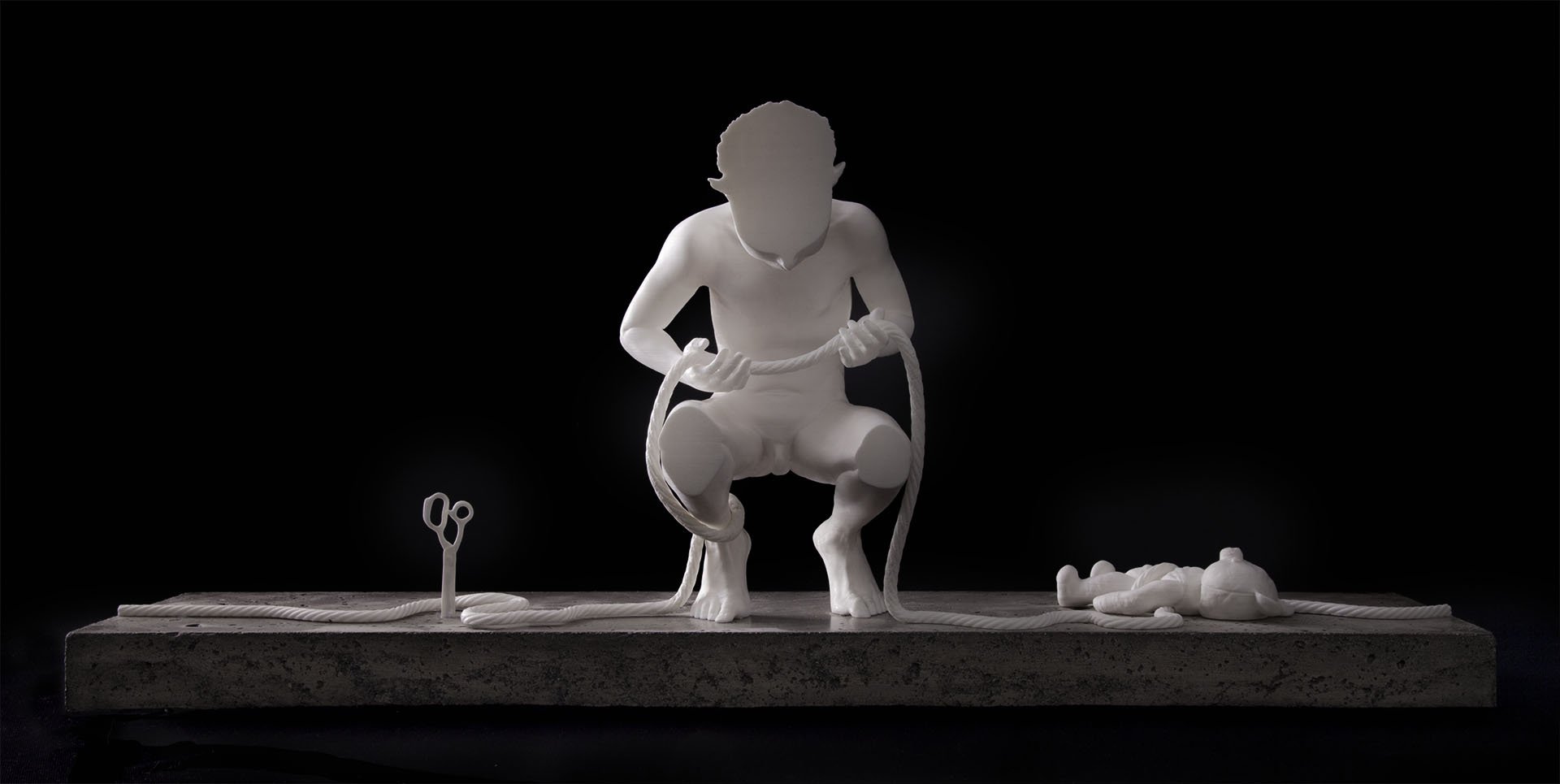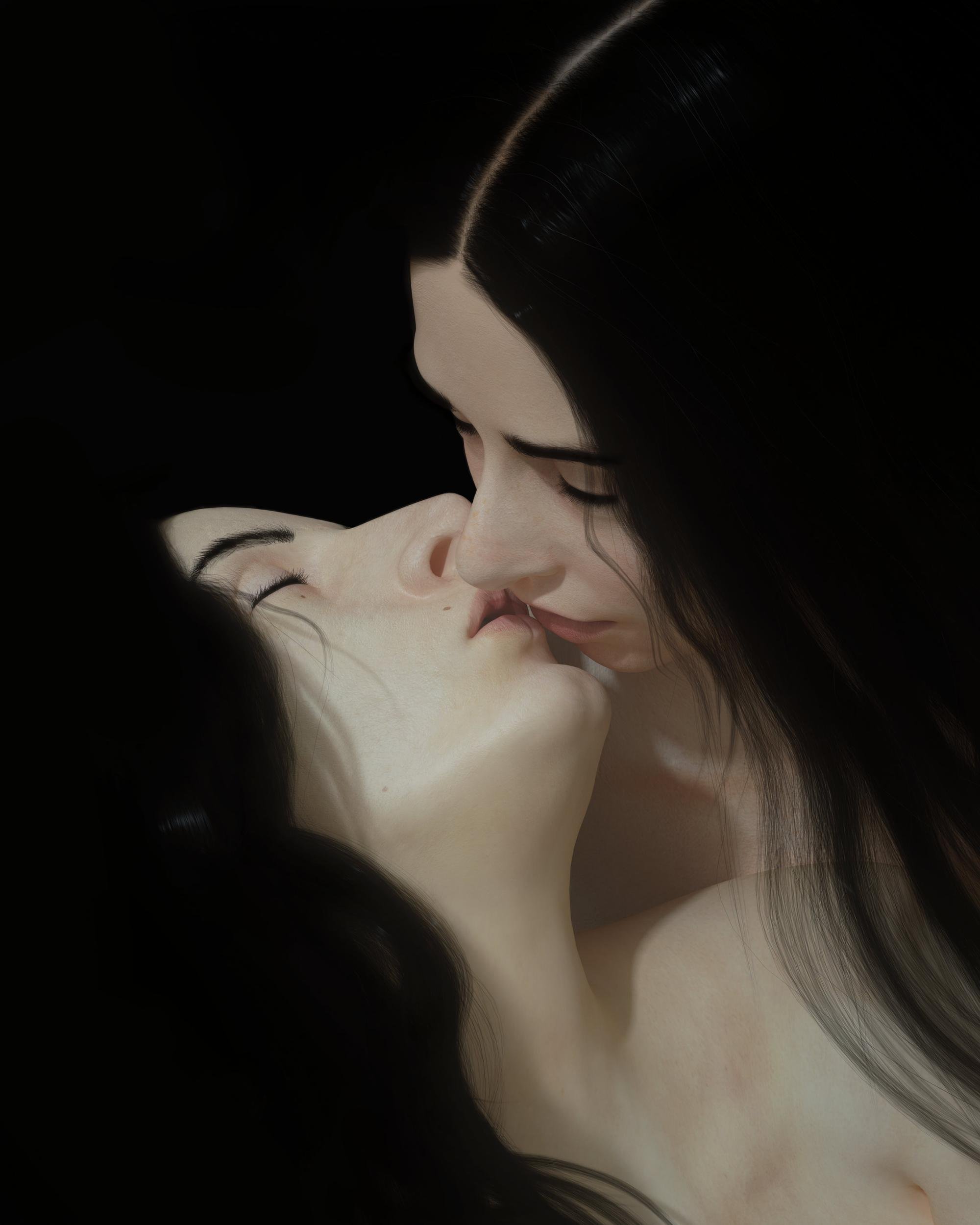Nature and Harmony with Stephan Duquesnoy

As a true artist and craftsman, Stephan Duquesnoy has succeeded in asserting his style within the 3D Art world. Creating his own tools and transposing into a digital world a universe inspired by the Pre-Raphaelites and William Morris's Arts & Crafts movement, he transports us into a darkly elegant universe where nature takes on a new form.
Can you tell us a bit about your background? I saw on your Instagram that you used to draw before getting into 3D. Why did you choose 3D?
Before I got into drawing I studied IT, and focussed on programming and system design. But I started drawing in my free time and soon found a passion there, which eventually let to me signing up for an art university course that combined theatre and game design. My IT background let me approach art and drawing in a more methodical way, which helped me develop quite rapidly. After I graduated I started working as both a lecturer at the university and an artist in the game industry. At some point I got pointed with art and drawing though, and I fell back to programming, consequently I would get bored of programming and fell back to drawing. This back and forth dominated my career for quite a bit!
About 5 years ago I discovered Houdini, and within that environment I can both program and do art at the same time, which opened up a lot of opportunities for me. On one hand I have the drawing background, which in essence is all about learning to observe and understand, and on the other there is the programming side which is all about translating ideas to clear instruction. 3D for me became a tool that lets me combine these two.
How would you describe your work? Do you feel part of an artistic genre, or close to other 3D artists?
This is such a hard question. 3D pipelines have been historically quite intense and not suitable for personal expression. Over the last few years we have seen so much change with tools becoming more accessible, and giving more room for 3D artists to start expressing themselves. I think there has been an liberation movement for 3D artists that most of us experienced recently, and that I feel my work is part of. But as we learned to express ourselves genuinely through the medium, it seems the majority of 3D artists started spreading out across different genres.
For me right now, I strongly align with creating art that instills calmth and harmony. Art that you can look at, and be immersed in.I’m not sure if that is a genre, or if the future will define it as such. I’m quite sure that a large number of artists around me are feeling the same urge to create work that calms down the world around us.
Stephan Duquesnoy
On top of this there are a few general things I align with, wanting to create genuine work, work that respects nature, and work that is thoroughly well made. I think this is a position a good portion of 3D artists share, which might not be that prevalent in other media.
The first thing I noticed in your work is the predominance of organic forms. Flowers and plants are everywhere. Can you tell us more about this?
I like nature. There is an endless combination of shapes, lines, colors and patterns to discover, and even more ways to interpret them into something we create. Adopting shapes from nature to lines is the oldest artform we know, and throughout centuries nature has always been this driving force behind developments in design. Working with flowers and plants in the digital space, devoid of nature, feels to me like an evolution of what we as humans have always done; Finding age-old beauty and figuring out new ways to portray nature.
Your work reminds me a lot of artistic movements present in the 19th century, whether William Morris's Arts & Craft, or Art Nouveau with artists like Alfons Mucha. Is this a period that inspires you?
Absolutely! There are so many parallels we can draw to modern days. Arts & Craft started as a rebellion against the Industrial revolution. It was the simple belief that everyone, regardless of their wealth, should be able to have beauty in their life. And they proposed to use the industrial revolution to support their craftsmanship, rather than a rejection of it or being replaced by it. And aesthetically it was an approach that really worked, the aesthetic they developed is still relevant and celebrated more than a century later. While the entire period was incredibly short. Funnily enough, the whole movement failed because it was too expensive.
For me the period is still an inspiration because it really shows that delicate balance between production and artisanship. Something that I think that is comparable to how digital artists of our times try to find their own voice.
Stephan Duquesnoy
Another movement that seems very close to your work is that of the Pre-Raphaelites, notably with their vision of women, often depicted in the midst of nature. Is there a reason why you work so exclusively with the female body?
The Pre-Raphaelites are in itself a quite rebellious group of artists, and the women that modelled for them all defied the typical gender roles of the times. I think that led to why the typical Pre--Raphaelite woman feels more like she is a part of the world in the painting but also an integral part of the design. She is not a subject to be decorated. But she and the work are one.
This harmony between all the elements in the works of the pre-raphaelites, even though they are quite chaotic, is what drew me in. And this is what makes me gravitate towards the female body, there is a certain repetition of shapes and curves that lends itself to harmoniously blend into natural chaos.











